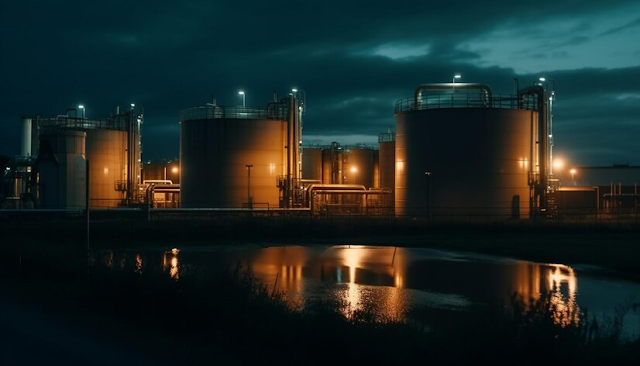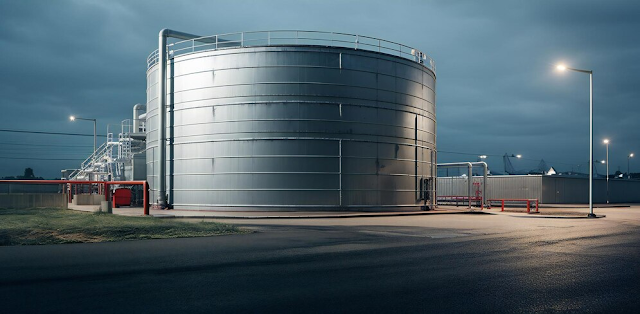Understanding Environmental Regulations in Industrial Operations
Environmental regulations encompass a wide range of laws and guidelines aimed at safeguarding natural resources, preventing pollution, and promoting sustainable practices. This section explores the importance of compliance with environmental regulations for businesses operating in various industries.
- Legal Framework: Environmental regulations are established at the local, state, and federal levels to address specific environmental concerns such as air and water quality, hazardous waste management, and land use.
- Compliance Obligations: Businesses are required to comply with regulatory requirements relevant to their operations, including obtaining permits, conducting environmental assessments, and implementing pollution prevention measures.
- Enforcement Mechanisms: Regulatory agencies enforce compliance through inspections, audits, and penalties for violations, emphasizing the importance of proactive adherence to environmental regulations.
The Role of a Storage Tank Company in Environmental Compliance
A reputable storage tank company plays a pivotal role in assisting businesses with environmental compliance by providing expertise in storage tank design, installation, and maintenance. This section highlights the contributions of a storage tank company to ensuring regulatory compliance and environmental stewardship.
- Customized Solutions: Storage tank companies offer tailored solutions to meet the specific needs and regulatory requirements of clients, including designing storage systems that minimize environmental impact and maximize efficiency.
- Regulatory Expertise: Experienced professionals within storage tank companies possess in-depth knowledge of environmental regulations and industry standards, enabling them to guide clients through compliance processes and navigate complex regulatory landscapes.
- Risk Mitigation: By implementing best practices in storage tank design, construction, and maintenance, storage tank companies help mitigate environmental risks and prevent potential hazards such as leaks, spills, and contamination.
Strategies for Navigating Regulatory Compliance with a Storage Tank Company
Effective navigation of environmental regulations requires proactive planning, collaboration, and adherence to best practices. This section outlines key strategies for businesses to ensure compliance with the assistance of a reputable storage tank company.
- Regulatory Assessment: Conduct a comprehensive assessment of regulatory requirements applicable to storage tank operations, including permitting, reporting, and record-keeping obligations.
- Partnering with Experts: Collaborate with a reputable storage tank company with a proven track record of assisting clients with environmental compliance, leveraging their expertise and resources to develop and implement compliance strategies.
- Continuous Monitoring and Maintenance: Implement a proactive approach to monitoring and maintaining storage tank systems, including regular inspections, testing, and preventive maintenance to identify and address potential compliance issues promptly.
- Employee Training and Awareness: Invest in employee training programs to ensure staff members are knowledgeable about environmental regulations, safety protocols, and emergency response procedures, fostering a culture of environmental stewardship and compliance within the organization.
Innovative Technologies for Environmental Compliance
Advancements in technology have revolutionized the storage tank industry, offering innovative solutions to enhance environmental compliance and operational efficiency. This section explores cutting-edge technologies adopted by storage tank companies to address environmental challenges effectively.
- Leak Detection Systems: Utilize advanced leak detection systems, such as automated monitoring sensors and electronic leak detection methods, to promptly identify and mitigate potential leaks or spills, minimizing environmental impact.
- Remote Monitoring Platforms: Implement remote monitoring platforms equipped with real-time data analytics capabilities to monitor storage tank operations, detect anomalies, and optimize performance while ensuring compliance with regulatory requirements.
- Secondary Containment Systems: Incorporate secondary containment systems, including double-walled tanks, berms, and liners, to provide an additional layer of protection against leaks and spills, reducing the risk of environmental contamination.
- Environmental Remediation Technologies: Deploy innovative environmental remediation technologies, such as bioremediation and soil vapor extraction systems, to mitigate the environmental impact of spills or contamination incidents and restore affected areas to their original state.
Regulatory Updates and Compliance Strategies
Environmental regulations are subject to frequent updates and revisions, necessitating ongoing vigilance and adaptation by businesses and storage tank companies. This section provides insights into recent regulatory developments and strategies for maintaining compliance in a dynamic regulatory landscape.
- Regulatory Updates: Stay informed about recent regulatory changes, including updates to environmental laws, permit requirements, and enforcement policies, through regular monitoring of regulatory agencies' announcements and publications.
- Compliance Audits and Reviews: Conduct periodic compliance audits and reviews to assess the effectiveness of existing compliance strategies, identify areas for improvement, and ensure alignment with updated regulatory requirements.
- Engagement with Regulatory Authorities: Foster open communication and collaboration with regulatory authorities by participating in industry forums, workshops, and stakeholder meetings to seek clarification on regulatory issues and proactively address compliance challenges.
- Adoption of Best Practices: Embrace industry best practices and voluntary standards, such as those outlined by industry associations and professional organizations, to enhance environmental performance and demonstrate a commitment to compliance excellence.
Environmental Impact Assessment and Mitigation Strategies
Prioritizing environmental impact assessment and mitigation is essential for minimizing the ecological footprint of storage tank operations. This section explores strategies for conducting environmental assessments and implementing mitigation measures to mitigate adverse environmental effects.
- Environmental Site Assessments (ESAs): Conduct comprehensive ESAs to evaluate the potential environmental risks associated with storage tank installations, including soil and groundwater contamination, ecological disturbances, and habitat impacts.
- Ecological Risk Analysis: Perform ecological risk analyses to assess the potential impacts of storage tank operations on sensitive ecosystems, wildlife habitats, and endangered species, and develop mitigation strategies to minimize adverse effects.
- Sustainable Land Use Planning: Adopt sustainable land use planning practices, such as site selection criteria, setback requirements, and land use zoning, to minimize the environmental footprint of storage tank installations and preserve natural resources.
- Habitat Restoration and Conservation: Implement habitat restoration and conservation initiatives, such as wetland mitigation projects and wildlife habitat enhancement measures, to offset the ecological impacts of storage tank developments and promote biodiversity conservation.
Community Engagement and Stakeholder Consultation
Effective community engagement and stakeholder consultation are essential components of responsible storage tank development and operation. This section discusses strategies for engaging with local communities, stakeholders, and regulatory agencies to foster transparency, trust, and collaboration.
- Public Outreach Programs: Develop public outreach programs and community engagement initiatives to educate local residents, businesses, and community organizations about storage tank projects, environmental safeguards, and emergency response protocols.
- Stakeholder Consultation Forums: Organize stakeholder consultation forums, public meetings, and advisory committees to solicit input, feedback, and concerns from diverse stakeholders, including residents, environmental groups, indigenous communities, and regulatory agencies.
- Partnerships with Local Organizations: Forge partnerships with local nonprofits, environmental organizations, and community groups to support environmental stewardship initiatives, promote sustainability awareness, and address community concerns related to storage tank operations.
- Transparent Communication Channels: Maintain transparent communication channels with stakeholders through regular updates, newsletters, websites, and social media platforms, providing timely information on project developments, regulatory compliance efforts, and environmental performance.







.jpg)